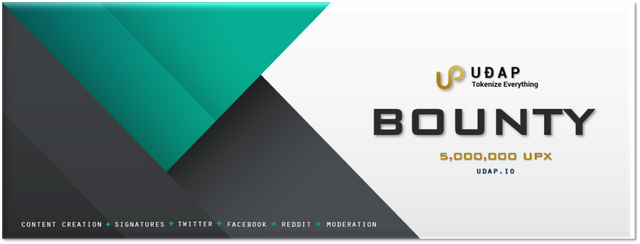UDAP: The Art of Tokenizing Anything
.png)
Many businesses have cases that can be improved and/ or solved by using distributed ledger technology. It can be used in many cases where trust services are needed by business applications. This can be utilized by using blockchain technology as an application platform to build the underlying trust infrastructure of the system.
Although Bitcoin, the first real implementation of blockchain, is a decentralized currency and payment system, the underlying constructs that form the basis of the system do not have to be limited to payment transactions, accounts, balances or users. Instead, blockchain technology in Bitcoin is nothing more than transactions secured and executed by a scripting language using cryptographic methods. This means that blockchain is a platform with a scripting language that can solve use cases other than just cryptocurrencies.
Defining UDAP
The platform is a blockchain based asset protocol that borders between applications and public blockchains to ensure Restful APIs and an Asset Wallet for those involved in developing applications to be able to design blockchain applications capable of doing without the need for writing smart contracts.
The question is in what way is UDAP giving providing a leverage to app developers and the answer is in the following:
Token service, so that applications can be instantly quote token-based assets on chain and provide built-in marketplace to their users.
State channels service which creates room for applications to carry out operations and in most instances offline and guaranteed by public blockchains of which, Ethereum is a good example.
Data obfuscation service, secure content distribution, exchange service and universal wallet.
Challenges of blockchain-based applications
Together, bitcoin and Ethereum have so far proven that blockchain technology, decentralized systems, and global collaborative communities can work together. They have also revolutionized usability among an elite developer community.
Some of the challenges include:
Scalability: almost all of the well-known first-generation blockchain systems have hard limits on the number of transactions. Bitcoin limits the maximum block size, Ethereum limits the total amount of gas in a block, as examples.
Cost
Privacy
Responsiveness.
The solution with UDAP
The idea here is to solve the problems by adopting and using state channel technology.
For example the issue of scalability can be tackled because the technology treats blockchain as the dispute adjudication platform that normally is involved in the minute-by-minute operations, but only plays its role when contracts need to be executed and very important assets need to be protected.
By leveraging state channel, transactions can run remotely off blockchain and with this arrangement cost is drastically cut down.
In addressing the concerns often raised regarding privacy, UDAP gives users the technology to control the visibility of their assts.
Finally, as it concerns the degree of responsiveness, the platform by leveraging state channels would enable blockchain supported applications to provide best possible UX in addition to a number of special features of decentralized ledgers.
It should be noted that UDAP does not in any way represent a generic State Channel framework. It is rather an implementation of State Channes that are guided to the applications that deal with non-fungible assets.
https://t.me/udapcommunity
https://bitcointalk.org/index.php?topic=5069084
https://www.udap.io/whitepapers/UDAP-Whitepaper-English-v08.pdf